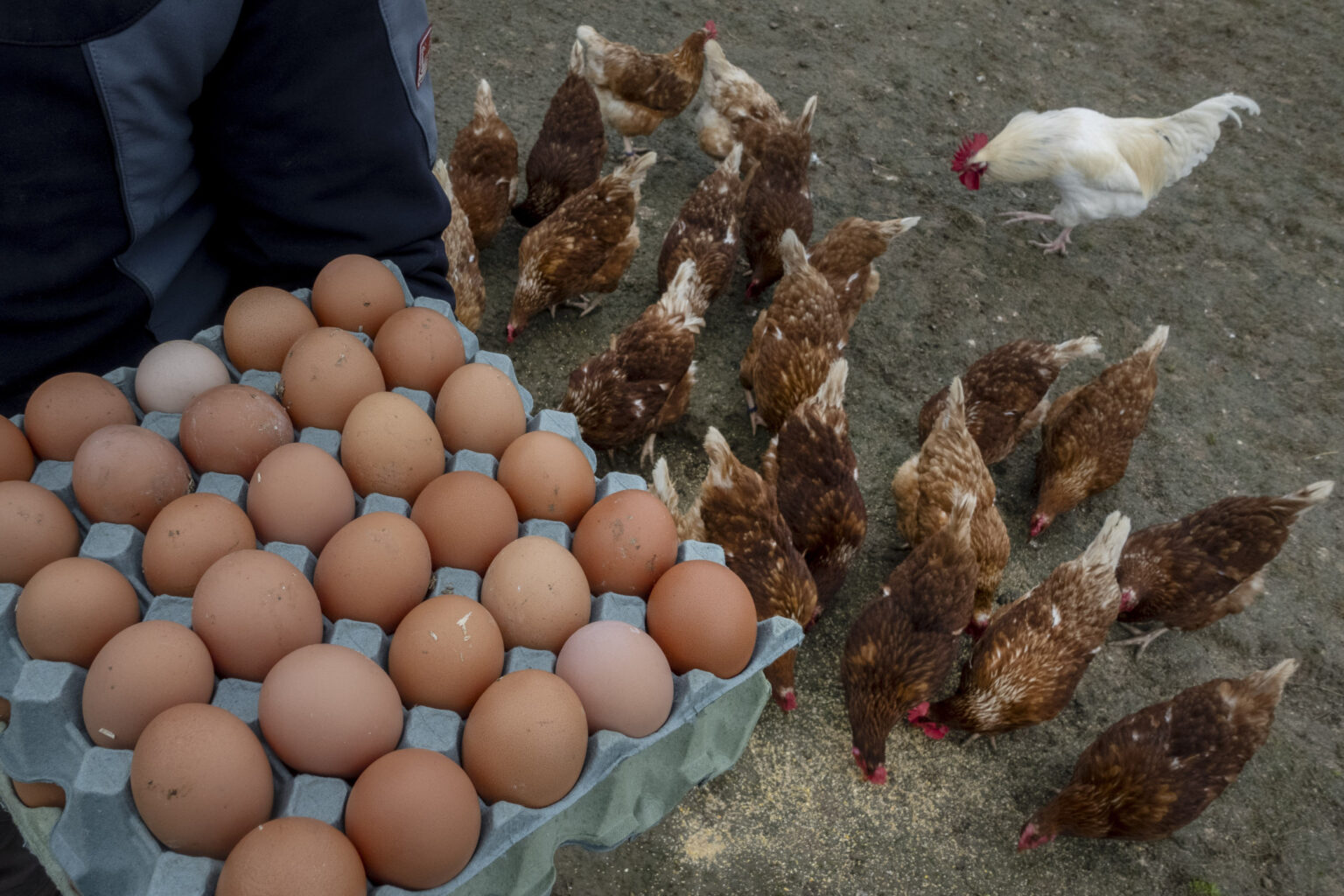As egg prices begin to ease, a new tariff strategy from Donald Trump could complicate the market recovery.
The reciprocal tariffs plan, aimed at leveling global trade imbalances, introduces levies on dozens of countries—including key egg exporters.
In March, Agriculture Secretary Brooke Rollins said the administration planned to import millions of eggs from countries like Turkey and South Korea to offset domestic shortages caused by avian flu outbreaks. Yet those same countries now face steep tariffs under Trump’s plan, potentially wiping out the intended benefit.
Why It Matters
Egg prices in the U.S. surged throughout 2024 due to a wave of avian flu cases that led to the slaughter of millions of laying hens.
Although the chicken population is beginning to recover, the U.S. Department of Agriculture in March predicted egg prices will increase over 57 percent this year.
Egg prices have declined in recent weeks, but wholesale prices are still 60 percent higher now than they were at this time last year, averaging $3 per dozen, per Fortune.
The Trump administration’s initial plan to mitigate costs through egg imports has now collided with its own tariff policy. Products from Turkey and South Korea will face new tariffs of 10 percent and 26 percent, respectively, undermining the cost advantage of importing eggs from those markets.
Egg Prices: What We Know
In January and February 2025, the U.S. imported more than 1.6 million dozen consumer-grade chicken eggs, according to USDA data.
Some relief had been anticipated as U.S.-based supply chains recovered. But some financial analysts warn that imported eggs now carry added costs due to duties, with retailers and suppliers likely to pass on those increases to consumers.
Finance expert Michael Ryan said that while wholesale prices have technically come down now, the price at your local grocery store can be “totally different”, given the gap between wholesale and retail prices. Trump’s tariffs on European imports could shake things up even more, he said.
“We’ve actually been importing eggs … to help with our domestic shortage (those avian flu outbreaks have been brutal on our supply),” Ryan said. “With new tariffs hitting those imports, we’re looking at a potential price boomerang effect.”
What Are Reciprocal Tariffs? Trump’s Plan Explained
Trump’s tariff framework includes a baseline 10 percent tariff on nearly all U.S. imports and additional “reciprocal” tariffs targeting 57 countries that, according to the administration, maintain higher barriers against U.S. exports. These reciprocal tariffs are calculated based on the U.S. trade deficit with each country, not the actual rates imposed by those nations.
The White House projects the plan will bring in over $1 trillion in new tariff revenue annually, which Trump has said will be used to fund tax cuts.
But not everyone agrees with that sentiment. Alex Beene, a financial literacy instructor for the University of Tennessee at Martin, said the greatest “irony” surrounding tariffs is how old methods to repair the decline of certain products can now be what triggers higher prices.
“Importing eggs from other countries was viewed as an easy way to help drive prices down, as more supply would alleviate the concerns of many retailers and provide more for consumers,” Beene explained to Newsweek. “However, now the same countries we’re importing from are finding themselves involved with new tariffs, tariffs that will be passed along to the consumer.”
Egg Production in the U.S. Vs. Canada
Compared to many European and Asian nations, U.S. egg prices have been more volatile due to disease outbreaks and a highly consolidated production model.
Further, the size of U.S. farms may be part of the problem. When comparing U.S. and Canadian egg farms, Canada’s are generally much smaller, per a March 2025 article from NPR. The typical egg farm in Canada has about 25,000 laying hens, whereas many farms in the U.S. have well over a million.
Could Egg Prices Go Up Under Trump’s Tariff Plan?
Financial pros say egg prices could rise under the plan. “While these prices won’t reach the highs they did a few months ago, customers will certainly start to notice an uptick in the coming months,” Beene said.
For now, prices remain at the mercy of international trade rules and the pace of poultry recovery in the U.S.
To keep a family-friendly budget, Ryan suggests considering alternatives to eggs – like powdered eggs for baking or plant-based options.
“I’ve actually been surprised by how well some of those alternatives work in recipes,” Ryan said.
Read the full article here

